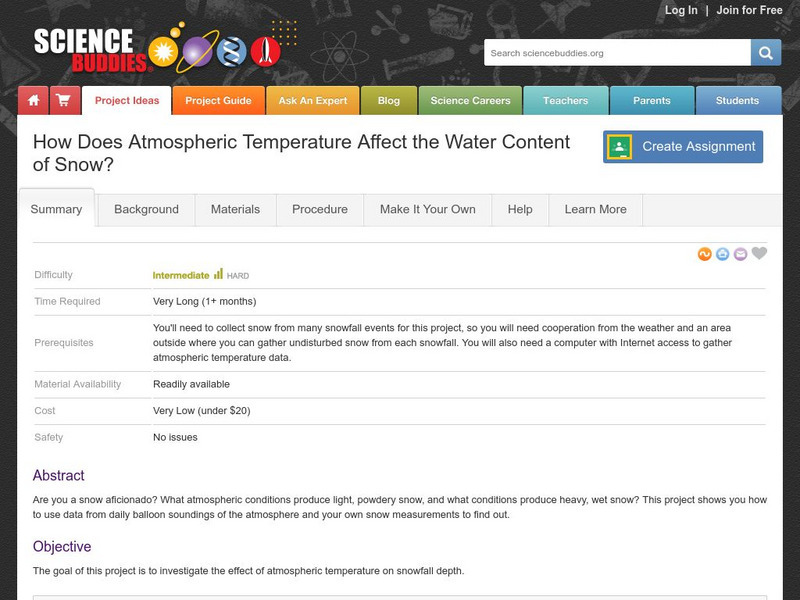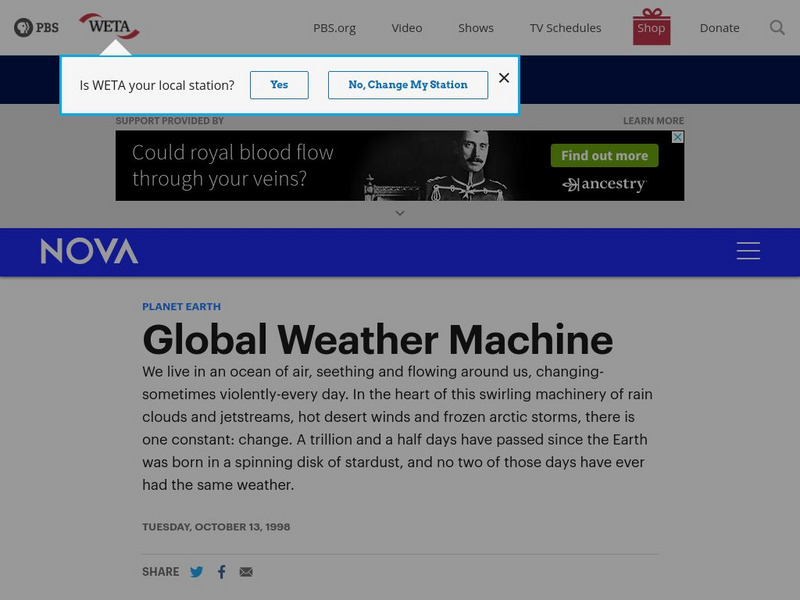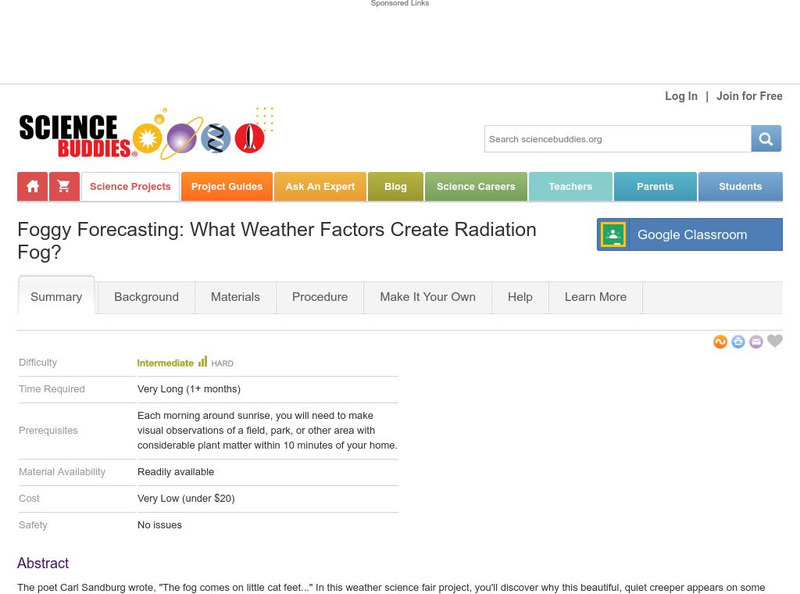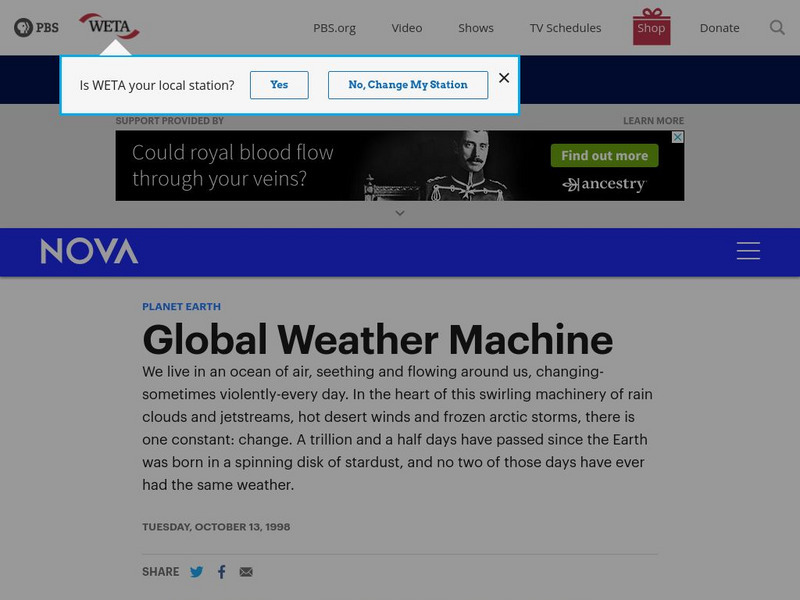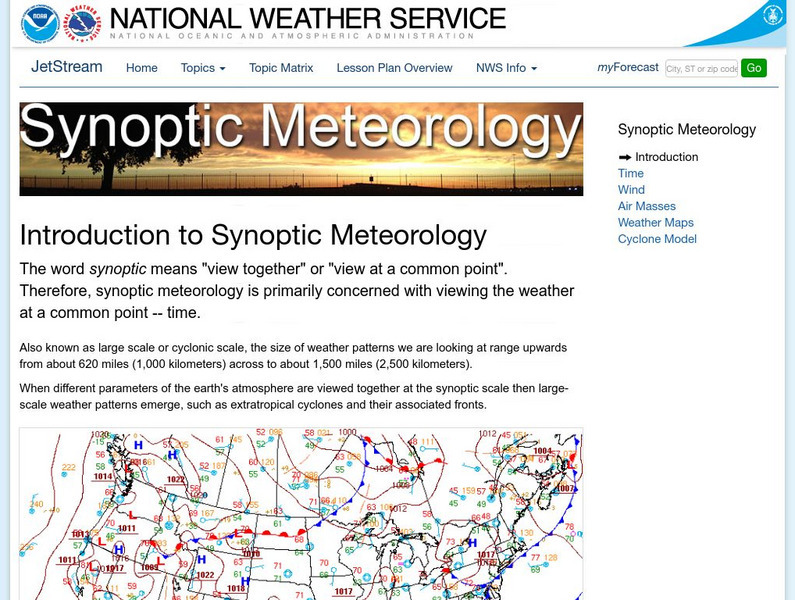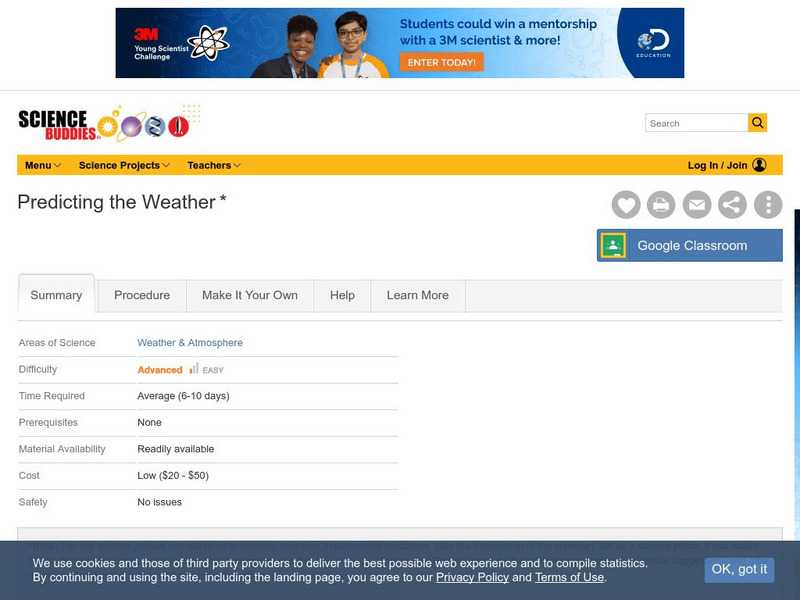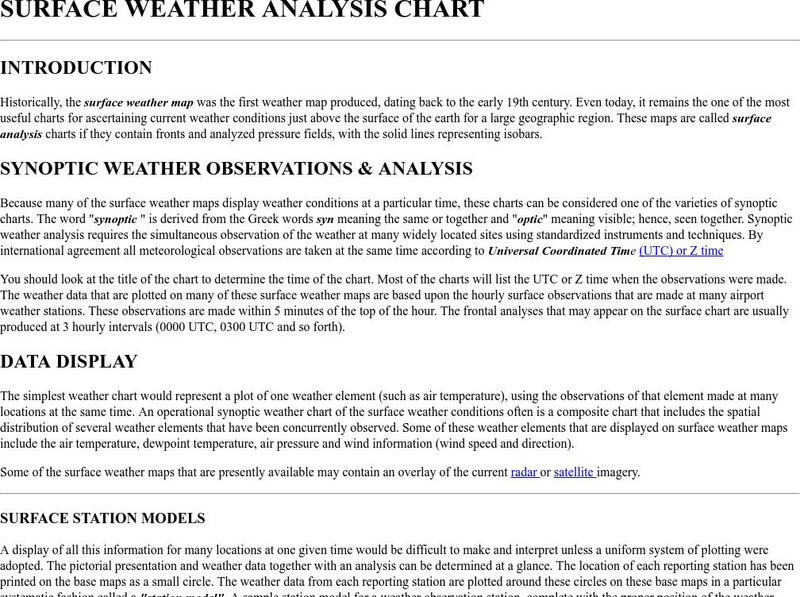Other
Denver Museum of Nature and Science: What's the Weather Like Today? [Pdf]
Weather is all around us. We can see it, feel it, touch it, hear it, and even taste it. Weather is the condition of the atmosphere with respect to temperature, humidity, wind, and other factors. Some of the many weather conditions...
Georgia Department of Education
Ga Virtual Learning: Weather and Climate
In this amazingly comprehensive interactive tutorial you will learn how factors such as ocean currents, topography, and air currents affect weather patterns. You will also learn the similarities and differences between weather and climate.
Science Buddies
Science Buddies: How Atmospheric Temperature Affects the Water Content of Snow?
If you're lucky enough to live in a place that gets snow in winter, you know that the feel of the snow can vary a lot. Sometimes it can be light and fluffy, and other times heavy and wet. This project shows you how to use data from daily...
PBS
Pbs Learning Media: Global Weather Machine
In this illustrated essay from NOVA Online, explore the cyclical process of weather creation and the effects of El Nino on the global weather system.
Science Buddies
Science Buddies: Foggy Forecasting: What Weather Factors Create Radiation Fog?
The poet Carl Sandburg wrote, "The fog comes on little cat feet". In this weather science fair project, you'll discover why this beautiful, quiet creeper appears on some days, and not on others. If you are fascinated by fog and weather...
American Geosciences Institute
American Geosciences Institute: Earth Science Week: Dangerous Atmosphere
For this activity, students research what types of severe weather their county has had over the past 50-60 years. They will look at the severity of these events and the number of injuries and deaths they caused. They will then decide...
PBS
Pbs/global Weather Machine
This site explains wind systems as part of a global weather scheme, with illustrations.
American Geosciences Institute
American Geosciences Institute: Earth Science Week: Build Your Own Weather Station
Students are guided in how to build their own weather station that will measure temperature, humidity, precipitation, atmospheric pressure, and wind direction and speed.
CK-12 Foundation
Ck 12: Earth Science: Temperature of the Atmosphere
[Free Registration/Login may be required to access all resource tools.] How different temperature gradients separate the atmosphere into distinct layers.
University Corporation for Atmospheric Research
Ucar: What Is Weather?
Weather is the mix of events that happen each day in our atmosphere. Learn how weather events are controlled by air pressure, how Meteorologists predict the weather and the difference between weather and climate.
National Weather Service
National Weather Service: Jetsream: Synoptic Meteorology
The National Weather Service presents this site on synoptic meteorology, large-scale weather systems. Learn about the structure and behavior of the atmosphere, including clouds, precipitation, winds and more. Also includes learning...
Annenberg Foundation
Annenberg Learner: What Forces Affect Our Weather?
A great starting point for learning about the weather and for finding help starting your own investigation of what affects the weather. Site is organized into the following sections: "The Atmosphere," "The Water Cycle," "Powerful...
Other
Canterbury Environmental Education Centre: Weather Explorer
A look at the weather, how it is measured, and how it is caused. Learn what weather is like all over the world, how global warming is affecting our planet, and how "extreme" conditions like hurricanes, tornadoes, floods, and drought...
Discovery Education
Discovery Education: Weather Maps
This site provides a lesson plan in which groups of students will each investigate a different type of weather map use for weather forecasting. Also includes discussion questions, extension ideas, and links to additional sites for more...
CK-12 Foundation
Ck 12: Earth Science: Collecting Weather Data Study Guide
This comprehensive study guide covers the main terms and concepts needed for an earth science unit on collecting weather data. Review questions are included at the bottom of the study guide.
National Geographic
National Geographic: Extreme Weather on Our Planet
This lesson from National Geographic for grades 2-5 has a great photo gallery and video of extreme weather, and a chart for plotting weather investigation. Learning objectives, teaching methods, and connections to National Science...
NASA
National Aeronautics and Space Administration: Scijinks: Atmosphere
Activity describing how the Earth's atmosphere was formed, why it stays close to the Earth, and why the sky is blue.
National Weather Service
National Weather Service: Jet Stream: Climate
The Online School for Weather discusses the world's major climate categories based upon general temperature profile related to latitude.
National Earth Science Teachers Association
Windows to the Universe: Weather Instruments
A short article providing a break down of instruments used for predicting the weather.
NASA
Nasa: Sci Jinks: How's the Weather on Other Planets?
Compare weather here on Earth to other planets and moons in our solar system. You will find many similarities and differences.
CK-12 Foundation
Ck 12: Fifth Grade Science: Earth Science: Weather and Water in the Atmosphere
[Free Registration/Login may be required to access all resource tools.] Discusses what causes weather, what humidity is and its role in the weather, how clouds are classified, and types of precipitation and how they form.
Science Buddies
Science Buddies: Predicting the Weather
Here's a good way to get yourself on TV. This science fair project will help you learn how to predict the weather. So who knows, maybe you'll be more accurate than your local meteorologist.
Other
Weather Photography
Source of information on the subject of weather photography. There are great links, images and tips on equipment to use. For the intermediate to advanced photographer.
University of Wisconsin
Atmospheric and Oceanic Sciences: Surface Weather Analysis
Explains the use of synoptic weather analysis in preparing weather maps and forecasting. Discusses the use of symbols as well.
![Denver Museum of Nature and Science: What's the Weather Like Today? [Pdf] Lesson Plan Denver Museum of Nature and Science: What's the Weather Like Today? [Pdf] Lesson Plan](https://d15y2dacu3jp90.cloudfront.net/images/attachment_defaults/resource/large/FPO-knovation.png)

